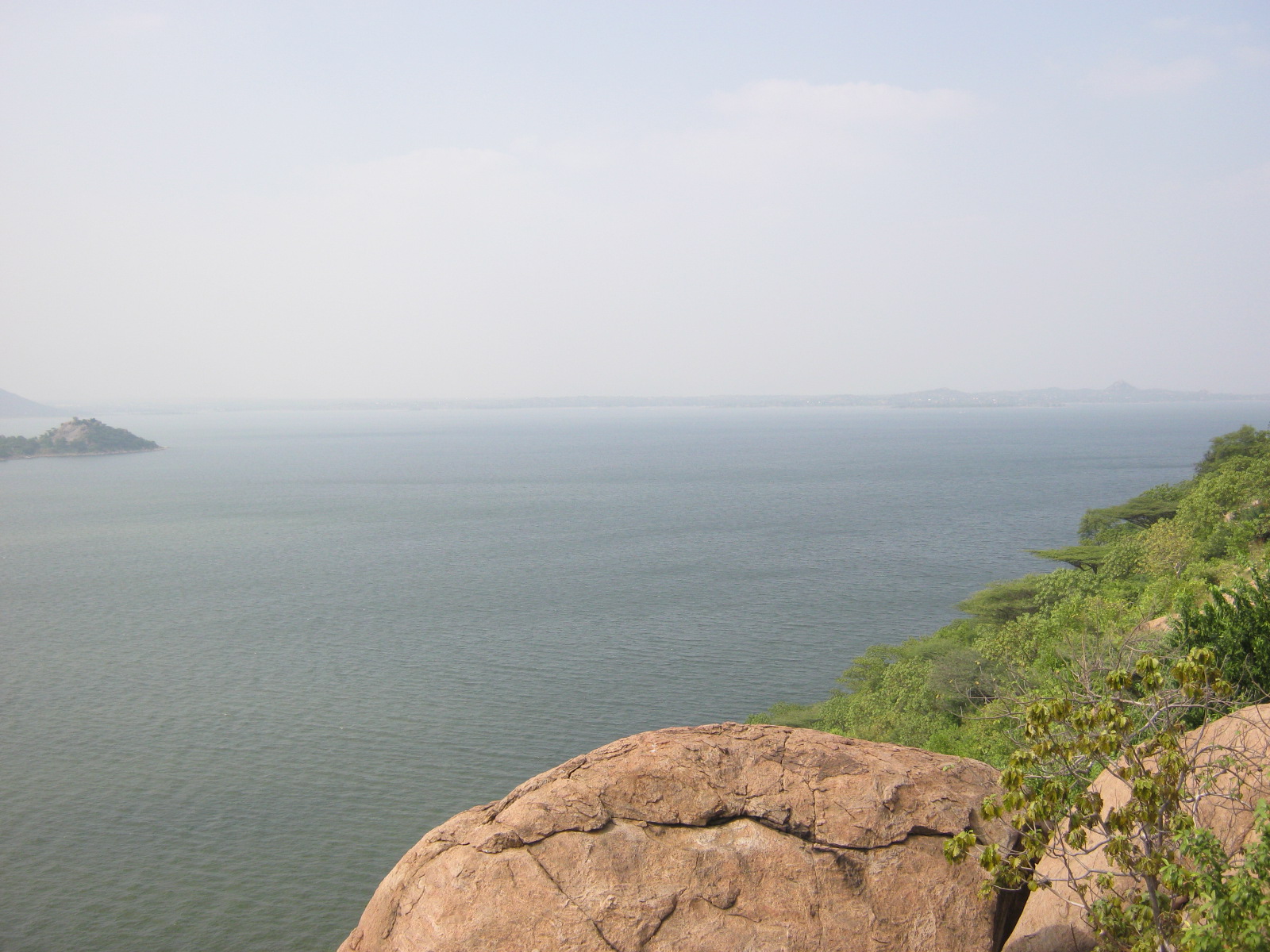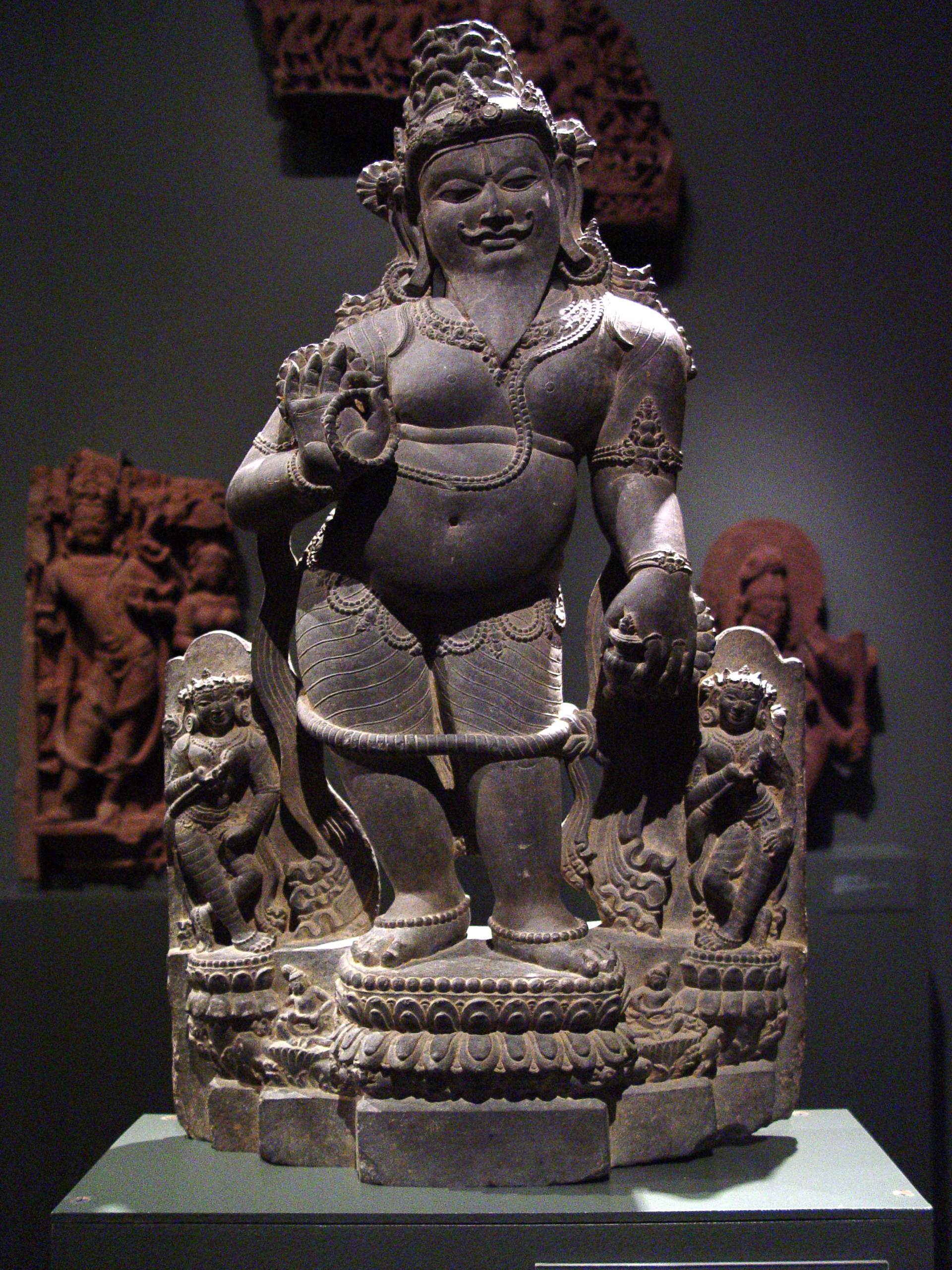|
Hogenakkal Falls
Hogenakkal Falls is a waterfall in South India on the Kaveri river on the border between Dharmapuri district of Tamil Nadu and Chamarajanagar district, Chamrajnagar district of Karnataka. It is located from Dharmapuri and from Chamrajnagar. Carbonatite rocks in this site are considered to be the oldest of its kind in South Asia and one of the oldest in the world. The Government of Tamil Nadu made a proposal to convert the falls into providing drinking water for the state. Etymology The pure Tamil name of Hogenakkal Falls is Uguneer Kal (உகுநீர் கல்). It was under the rule of Mysore Kingdom from 1652 to 1768 and during that period many Kannadas, Kannadigas were employed and settled here in large numbers for tax collection work. Due to this reason, many Tamil names there became Kannada names.That is how Uguneer Kal(உகுநீர் கல்) became Hogenakkal. The name Hogenakal is derived from Kannada means ‘Smoky Rocks’. The river when falls on the ... [...More Info...] [...Related Items...] OR: [Wikipedia] [Google] [Baidu] |
Kaveri River
The Kaveri (also known as Cauvery) is a major river flowing across Southern India. It is the third largest river in the region after Godavari and Krishna. The catchment area of the Kaveri basin is estimated to be and encompasses the states of Tamil Nadu, Karnataka, Kerala, and the union territory of Puducherry. The river rises at Talakaveri in the Brahmagiri range in the Western Ghats. The source is located at an elevation of in the Kodagu district of Karnataka. The river flows for about through the Deccan plateau in Karnataka before entering Tamil Nadu. It flows further eastward in Tamil Nadu for before flowing into the Bay of Bengal near Poompuhar in Mayiladuthurai district of Tamil Nadu. The river flows for a total length of about . The major tributaries include Amaravati, Arkavati, Bhavani, Hemavati, Kabini, Lakshmana Tirtha, and Noyyal. There are a number of dams on the river which form part of an extensive irrigation system and are used for the generation ... [...More Info...] [...Related Items...] OR: [Wikipedia] [Google] [Baidu] |
Kaveri
The Kaveri (also known as Cauvery) is a Rivers of India, major river flowing across Southern India. It is the third largest river in the region after Godavari River, Godavari and Krishna River, Krishna. The catchment area of the Kaveri basin is estimated to be and encompasses the states of Tamil Nadu, Karnataka, Kerala, and the union territory of Puducherry (union territory), Puducherry. The river rises at Talakaveri in the Brahmagiri (hill), Karnataka, Brahmagiri range in the Western Ghats. The source is located at an elevation of in the Kodagu district of Karnataka. The river flows for about through the Deccan plateau in Karnataka before entering Tamil Nadu. It flows further eastward in Tamil Nadu for before flowing into the Bay of Bengal near Puhar, Mayiladuthurai, Poompuhar in Mayiladuthurai district of Tamil Nadu. The river flows for a total length of about . The major tributaries include Amaravati River, Amaravati, Arkavati, Bhavani River, Bhavani, Hemavati River, He ... [...More Info...] [...Related Items...] OR: [Wikipedia] [Google] [Baidu] |
Tamil Nadu
Tamil Nadu (; , TN) is the southernmost States and union territories of India, state of India. The List of states and union territories of India by area, tenth largest Indian state by area and the List of states and union territories of India by population, sixth largest by population, Tamil Nadu is the home of the Tamil people, who speak the Tamil language—the state's official language and one of the longest surviving Classical languages of India, classical languages of the world. The capital and largest city is Chennai. Located on the south-eastern coast of the Indian peninsula, Tamil Nadu is straddled by the Western Ghats and Deccan Plateau in the west, the Eastern Ghats in the north, the Eastern Coastal Plains lining the Bay of Bengal in the east, the Gulf of Mannar and the Palk Strait to the south-east, the Laccadive Sea at the southern Cape (geography), cape of the peninsula, with the river Kaveri bisecting the state. Politically, Tamil Nadu is bound by the Indian sta ... [...More Info...] [...Related Items...] OR: [Wikipedia] [Google] [Baidu] |
Sangam Literature
The Sangam literature (Tamil language, Tamil: சங்க இலக்கியம், ''caṅka ilakkiyam''), historically known as 'the poetry of the noble ones' (Tamil language, Tamil: சான்றோர் செய்யுள், ''Cāṉṟōr ceyyuḷ''), connotes the early classical Tamil literature and is the earliest known literature of South India. The Tamil tradition links it to Legendary Tamil Sangams, legendary literary gatherings around Madurai in the ancient Pandya dynasty, Pandya kingdom. It is generally accepted by most scholars that the historical Sangam literature era, also known as the Sangam period, spanned from 100 BCE to 250 CE, on the basis of linguistic, epigraphic, archaeological, numismatic and historical data; though some scholars give a broader range of 300 BCE to 300 CE. The Eighteen Greater Texts (Patiṉeṇmēlkaṇakku), along with the Tamil grammar work Tolkāppiyam, Tolkappiyam, are collectively considered as Sangam literature. These tex ... [...More Info...] [...Related Items...] OR: [Wikipedia] [Google] [Baidu] |
Sediment
Sediment is a solid material that is transported to a new location where it is deposited. It occurs naturally and, through the processes of weathering and erosion, is broken down and subsequently sediment transport, transported by the action of wind, water, or ice or by the force of gravity acting on the particles. For example, sand and silt can be carried in suspension (chemistry), suspension in river water and on reaching the sea bed deposited by sedimentation; if buried, they may eventually become sandstone and siltstone (sedimentary rocks) through lithification. Sediments are most often transported by water (fluvial, fluvial processes), but also wind (aeolian processes) and glaciers. Beach sands and stream channel, river channel deposits are examples of fluvial transport and deposition (geology), deposition, though sediment also often settles out of slow-moving or standing water in lakes and oceans. Desert sand dunes and loess are examples of aeolian transport and deposition. ... [...More Info...] [...Related Items...] OR: [Wikipedia] [Google] [Baidu] |
South India
South India, also known as Southern India or Peninsular India, is the southern part of the Deccan Peninsula in India encompassing the states of Andhra Pradesh, Karnataka, Kerala, Tamil Nadu and Telangana as well as the union territories of Lakshadweep and Puducherry, occupying 19.31% of India's area () and 20% of India's population. It is bound by the Bay of Bengal in the east, the Arabian Sea in the west and the Indian Ocean in the south. The geography of the region is diverse, with two mountain ranges, the Western and Eastern Ghats, bordering the plateau heartland. The Godavari, Krishna, Kaveri, Penna, Tungabhadra and Vaigai rivers are important non-perennial sources of water. Chennai, Bengaluru, Hyderabad, Coimbatore and Kochi are the largest urban areas in the region. The majority of the people in South India speak at least one of the four major Dravidian languages: Telugu, Tamil, Kannada and Malayalam. During its history, a number of dynastic kingdoms ruled ove ... [...More Info...] [...Related Items...] OR: [Wikipedia] [Google] [Baidu] |
Brahmagiri (hill)
Brahmagiri, is a mountain range in the Western Ghats of south India. It is situated on the border between Kodagu district in Karnataka state in the north and Wayanad district of Kerala state on the south. Brahmagiri Hill, at 1608 m height, near Tirunelli is a scenic tourist attraction. The top of Brahmagiri Hill is well forested and has much wildlife. Talakaveri is located on the northern section of the range, near Bhagamandala in Kodagu district (Coorg), in the South Indian state of Karnataka. Tourist attractions Thirunelli Temple, dedicated to Lord Vishnu, lies on the Kerala side of Brahmagiri. The temple was constructed in an ancient style and includes 30 granite pillars. According to legend, the temple was constructed by Lord Brahma himself. Pakshipathalam at an altitude of 1740 m is another attraction on the Kerala side. Pakshipathalam has a cave that is said to have been used by rishis in ancient times. On the Karnataka side it is also known by the name of Munikal ... [...More Info...] [...Related Items...] OR: [Wikipedia] [Google] [Baidu] |
Talakaveri
Talakaveri or Talacauvery is the place that is generally considered to be the source of the river Kaveri and a holy place for many Hindus. It is located on Brahmagiri hills near Bhagamandala in Kodagu district (Coorg), in the South Indian state of Karnataka. It is located close to the border with Kasaragod district, Kerala. Talakaveri stands at a height of 1,276 meters above sea level. Despite its traditional status as the source of the Kaveri, there is no permanent visible flow from this place to the main rivercourse, except during the monsoon rains. A tank or is erected on a hillside, at the place that is said to be the river's origin. It is also marked by a small temple, and the area is frequented by pilgrims. The river originates as a spring feeding this tank, which is considered to be a holy place to bathe on special days. The waters are then said to flow underground to emerge as the Kaveri river some distance away. The temple has been renovated extensively, most re ... [...More Info...] [...Related Items...] OR: [Wikipedia] [Google] [Baidu] |
Kuṟuntokai
Kuṟuntokai (, meaning ''the short-collection'') is a classical Tamil poetic work and traditionally the second of the Eight Anthologies (''Ettuthokai'') in the Sangam literature. The collection belongs to the ''akam'' (love) category, and each poem consists of 4 to 8 lines each (except poem 307 and 391 which have 9 lines). The Sangam literature structure suggests that the original compilation had 400 poems, but the surviving ''Kuruntokai'' manuscripts have 402 poems. According to Takanobu Takahashi – a Tamil literature scholar, these poems were likely composed between 100 CE and 300 CE based on the linguistics, style and dating of the authors. Kamil Zvelebil, a Tamil literature and history scholar, states that the majority of the poems in the ''Kuruntokai'' were likely composed between the 1st century BCE and the 2nd century CE. The ''Kuruntokai'' manuscript colophon states that it was compiled by Purikko (உரை), however nothing is known about this compiler or the patron. ... [...More Info...] [...Related Items...] OR: [Wikipedia] [Google] [Baidu] |






